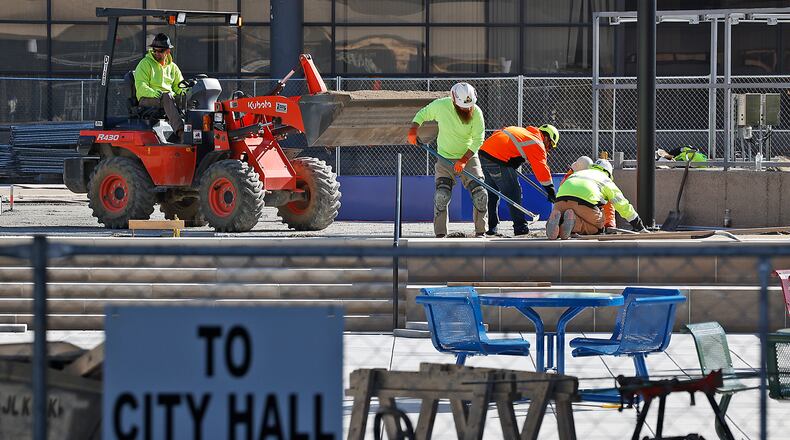City Manager Bryan Heck explained property owners in the downtown area “will still be required to pay property taxes, but a portion of those will be diverted into a TIF fund that can be used for public improvements … it could be for road improvements, streetscapes, one-way to two-way road conversion.”
For example, he cited the National Road Commons park, a green space, seen as a public improvement for downtown.
He noted that original plans called for the park to extend all the way to the Heritage Center, saying the TIF fund could help support that.
“So we could expand or extend the park,” he said as an example.
Taxes earmarked for city schools, an estimated 65% of property tax collections, will not be included in the TIF, ensuring that city schools will continue to receive their entire portion of annual tax support allocations.
The TIF applies to what Heck called the “Unified Plan Area,” adopted in 2006, extending from Yellow Springs Street to the west to Spring Street on the east, and north of Buck Creek from Cliff Park Road to Monroe Street just past the Clark State Performing Arts Center to the south.
He added that if property values in the TIF area would increase, those dollars would also be applied to the fund set aside for public improvements and offered an example.
Credit: Bill Lackey
Credit: Bill Lackey
Even without an increase in projected property values, Heck said the TIF could generate an estimated $8 million over the 30-year period that could be spent on qualifying public improvements. He added the TIF would only collect the increased valuation on non-school revenue.
David Estrop, retired Springfield City Schools superintendent and now assistant mayor, praised the proposal for assuring school dollars remained intact, and he said it’s important to do everything possible to make the downtown more attractive.
“I look out the windows here from the city forum and see empty building, empty building, empty building … We apparently have some landlords who just do not give a damn and are not willing to sell or improve their properties,” Estrop said. “We need to provide some enticements for others so they will be more aggressive in pursuing the purchase of these buildings so they can be put back into use and make downtown more attractive.”
“I am absolutely convinced that downtown is the heart of any city, and if the downtown isn’t healthy, the city isn’t healthy … I will be very strongly supporting this as one thing we can do … so we can make the public spaces in downtown more attractive in the hope of bringing more developers interested in many of the empty structures that we have here,” Estrop said.
About the Author

